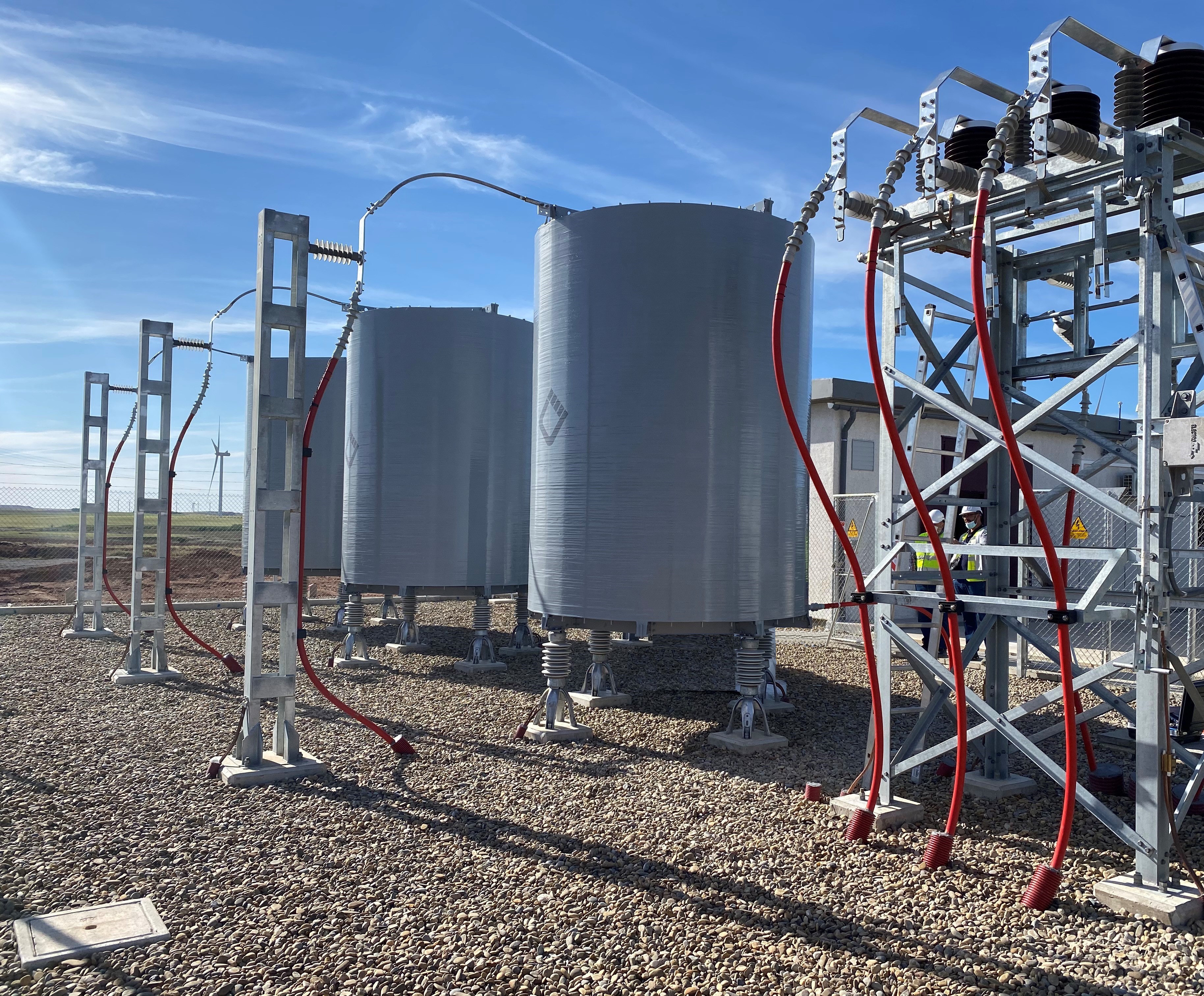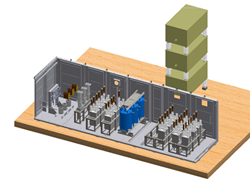Grid Codes include a series of requirements associated with voltage and reactive power control which must be fulfilled, for the most part, at the generation unit level. In the case of renewable plants, the usual problems are related to the inability to comply with reactive power delivery and voltage control at the point of connection and to a possible excess of harmonic distortion. As detailed below, different solutions are available to solve these problems.

Capacitor bank technology
Reactive Compensation
Capacitor banks inject reactive power to participate in voltage and power factor control in renewable energy generation plants. Depending on the needs of each installation, they can have a fixed configuration (without a switching device) or an automatic configuration (with a switching device). On the other hand, in low generation conditions, high voltage lines and medium voltage cables present a capacitive behavior, which implies an increase of the voltage at the end of the line and the generation of capacitive VAr. Shunt reactors are designed to be connected to the ends of the line to absorb this excess of reactive power and, thus, control the voltage.

Shunt reactors
By incorporating power electronics to the solution, the compensation system will obtain a greater flexibility, understood as a faster response to setpoint changes and a smoother regulation of the power supplied. These are known as FACTS (Flexible AC Transmission Systems). In renewable energy generation plants, the most widely used are the STATCOM (Static Synchronous Compensator) and, to a lesser extent, the SVC (Static Var Compensator).
Using a synchronous generator as a compensation element, converting it into a synchronous capacitor, is also an option. This makes possible to control Q and to dampen changes in P. The synchronous generator has the additional advantage that, being a rotating machine, it increases the inertia of the system, providing strength to the network. On the other hand, its cost is high and its reactive power delivery and absorption capacity is limited by its capability curve.
A hybrid system typically comprises a dynamic compensation element (STATCOM or SVC) and a combination of capacitive and reactive elements (capacitor bank and reactors) mechanically switched to provide the full range of reactive control. The objective is to meet the dynamic requirement for reactive injection while optimizing the cost of the solution. The lower cost passive elements provide the off-set levels while the dynamic elements perform the fine tuning.
Strategies on Reactive Power Control
The main purpose of the PPC (Power Plant Controller) is to maintain the expected power output of the plant at the point of connection as close as possible to the required setpoint. This objective is achieved by sending setpoints to the generating units and to the additional reactive power compensation equipment, so that they can contribute to meeting the grid connection requirements. The use of a dedicated PPC relieves the SCADA assigned to the server unit from performing the central control of the generating plant.
Harmonic filtering
The most common method to decrease harmonic distortion is the use of passive harmonic filters. This is due to their effectiveness and low cost compared to power electronics based solutions. The most commonly used are still tuned passive filters, also known as LC-type filters.

Harmonic filter
Summary
In case of facing grid connection issues, there are various solutions available, both passive and dynamic, to meet Grid Code requirements. Before deciding which one to use, it is necessary to know the non-compliance level and to choose the best solution, both technically and economically.
Rafael Díaz (Power Quality Global Product Engineering Manager)
For more information: https://www.arteche.com/en/power-quality-grid-connected-renewables
Contact us: Arteche






